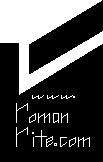| <<Previous |
Cleansings
291. According to IG 280, if any Eucharistic bread, or a particle of it falls, it is to be picked up reverently. If any of the precious blood spills, the area is washed and the water poured into the sacrarium.
292. According to IG 278, "Whenever a fragment of the Eucharistic bread adheres to his fingers, especially after the ... communion of the faithful, the priest wipes his fingers over the paten or, if necessary, washes them." Similarly for the bishop after communion, he "if need be, washes his hands" (CB 166). This would seem to apply equally to "Extraordinary ministers of Holy Communion".
293. According to IG 279, as a general rule for all forms of Mass: "The vessels are cleansed by the priest, deacon or acolyte after communion or after Mass, if possible at a side table." The water or water and wine, used to cleanse the chalice are drunk by the one who does the cleansing.
2002 IG update. In the Study Translation for IG 279 "acolytho institutio" has been translated as "acolyte". Changes to 2002 IG 192 emphasise that only an instituted acolyte may do these purifications -- not an altar server who has not been instituted as an acolyte, by a bishop, using the rite for this.
294. According to IG 306, "from the presentation of the gifts until the cleansing of the vessels" the chalice, paten, pyx, corporal, purificator and missal remain on the altar. It seems, therefore, that all these should be removed from the altar during the cleansings. However provision is made for some of them to remain on the altar, for some types of Mass, as detailed below.
2002 IG 306 adds the pall to the list of items.
295. For a Basic Mass, without deacon or concelebrants the instructions are given in IG 163:
296. After the distribution of communion, the priest consumes any remaining consecrated wine at the altar. Similarly consecrated hosts are consumed by the priest at the altar. Alternatively, the priest may carry the consecrated hosts to the place of reservation of the Eucharist (i.e. the tabernacle).
19 April 2002 Update: In the Newsletter of the USCCB BCL (March/April 2002) it was reported: "Cardinal Medina, Prefect of CDWDS, noted that neither an indult nor even the permission of the diocesan bishop is required for extraordinary ministers of Holy Communion to help the priest celebrant to consume what may remain of the Precious Blood after the distribution of Holy Communion. "Rather," he wrote, "given the grave and overriding need to safeguard the Precious Blood, ministers of Holy Communion or other communicants may consume what remains of the Precious Blood in a dignified and reverent manner." This seems to be from a letter associated with a Decree signed by Cardinal Medina Estevez of March 22, 2002 (Prot. 1383/01/L).
297. At the altar the priest collects any remaining particles. At the side table or the side of the altar, the priest cleanses the paten or vessel over the chalice. He then cleanses the chalice, saying inaudibly: Lord, may the food we have received ... , and dries it with a purificator. If this is done at the altar, the vessels are taken to the side table by a minister.
2002 IG 163 removes the reference to the cleansings "at the side of the altar" but has "at the altar". The Latin word "latus" meaning "side" has been removed.
298. Alternatively, the vessels are covered and left on a corporal, "either on the altar or the side table" (IG 163), for cleansing immediately after Mass, following the dismissal of the people.
299. According to IG 192 "a formally instituted acolyte helps the priest or deacon to cleanse and arrange the vessels after communion. In the absence of a deacon, the acolyte carries the sacred vessels to the side table and purifies, wipes and arranges them in the customary manner."
2002 IG 192, in the second sentence, has "acolythus rite institutus". So a ritually instituted acolyte does these purifications.
300. For Mass with a deacon, according to IG 183 - 184: After the distribution of communion, the deacon consumes, at the altar, the blood of Christ, assisted by other deacons and priests, if necessary. With the priest, the deacon collects any remaining fragments at the altar. The deacon takes the chalice and other vessels to the side table where he cleanses them in the usual way. He may leave them covered, on a corporal, on the side table, to be cleansed immediately after Mass, following the dismissal of the people.
301. For a Mass with concelebrants, according to IG 247 and IG 249, after communion, the deacon drinks any remaining Eucharistic wine and then takes the chalice to the side table. The chalice is cleansed by the deacon or an instituted acolyte, in the usual way of IG 183. Apparently this would only be done by concelebrants in the absence of both.
302. For Mass with only one minister, without a congregation the instructions are in IG 270. The priest cleanses the chalice. It may either be taken to the side table by the minister, or replaced on the altar at the side.
| <<Previous |
Copyright J.R. Lilburne, 18 March 2002. Last updated 19 April 2002.
